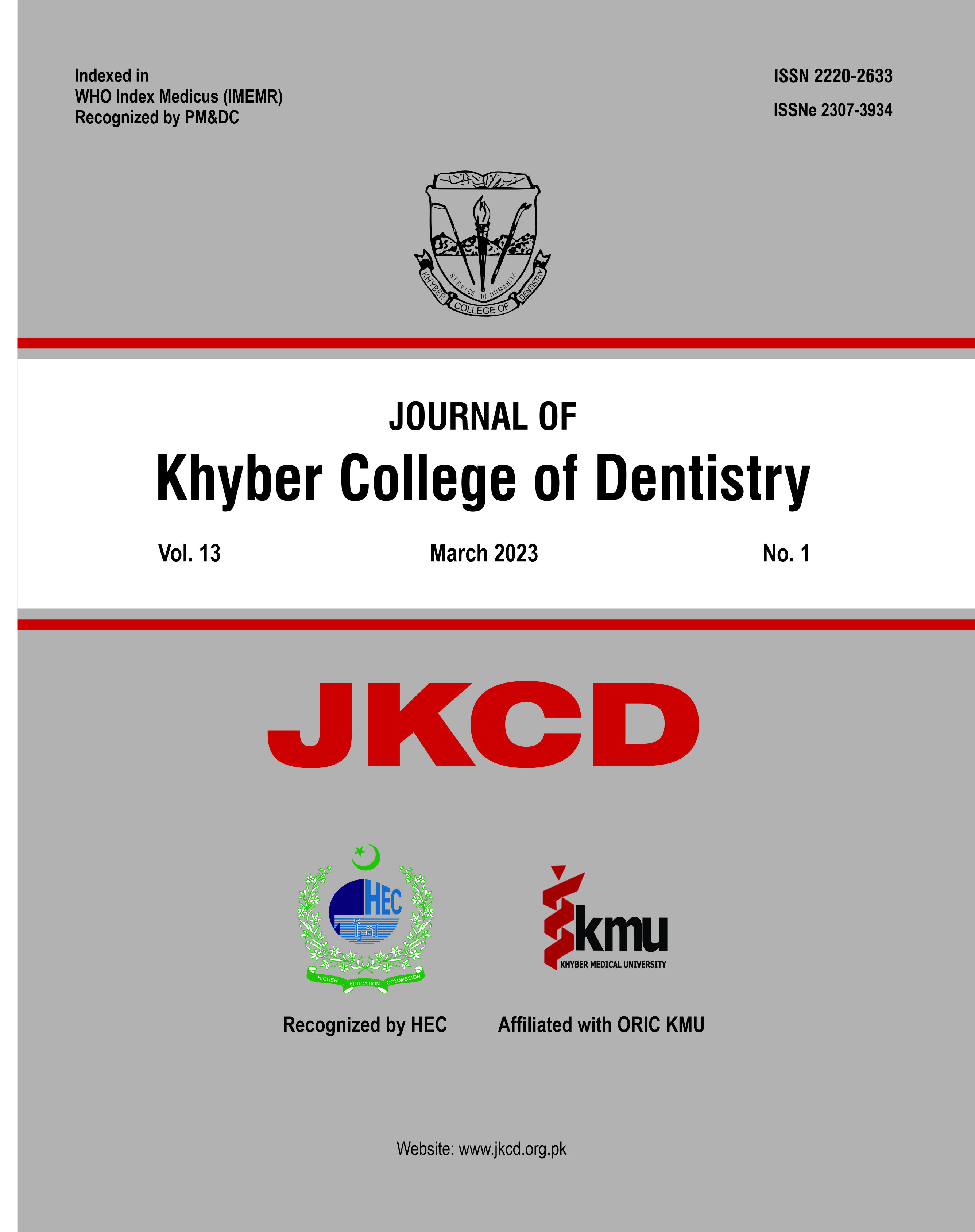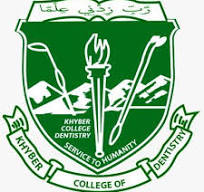FREQUENCY OF WHITE SPOT LESIONS IN ORTHODONTIC PATIENTS VISITING TO KHYBER COLLEGE OF DENTISTRY(KCD) PESHAWAR
DOI:
https://doi.org/10.33279/jkcd.v13i1.99Keywords:
White spot lesions, frequency, fi xed appliance, oral hygieneAbstract
Objectives: The determine the frequency of how common white spot lesions in orthodontic patients .
Materials and Methods: A total of 147 patients who visited the Orthodontics department at Khyber College of Dentistry, Peshawar were included in the study. Intraoral pictures were acquired using a DSLR camera before and after therapy (6 months after fi xed device insertion) (D600). The development of white spot lesions was evaluated between pre and post-therapy photos. SPSS version 20.0 was used to analyze the data.
Results: Eight four were female (57.1%) and sixty-three were males (42.9%). The mean age was 21.45±4.87 years. The overall frequency of WSL in pre-treatment patients was in four patients (2.7%) only. Out of total 147 patients, 68 (46.3%) patients had WSL while 79(53.7%) were WSL free at mid-treatment time. The frequency of WSL in pre-treatment and mid-treatment was statistically signifi cant having p-value of 0.04. The frequency of WSL stratifi ed by gender showed that females had more WSL than males. The frequency of WSL stratifi ed by age showed that maximum number of cases those had WSL were from 13 to 15 years of age, followed by 26 to 30 years. The stratification for frequency of WSL by age was not statistically signifi cant having p-value of 0.602.
Conclusion: During the fi rst six months of treatment, the number of WSLs increased dramatically in this clinical investigation. During the fi rst few months of treatment, clinicians should assess patients' dental hygiene and must take further precautions to prevent the occurrence of WSL.
Downloads
Published
How to Cite
Issue
Section
License
Copyright (c) 2023 Tahira Hussain, Muhammad Saood, Syed Suleman Shah, Ahsan Mehmood shah, Faizan Ul Hassan, Haris Mustafa, Siddiq Yousufi

This work is licensed under a Creative Commons Attribution-NonCommercial-NoDerivatives 4.0 International License.
You are free to:
- Share — copy and redistribute the material in any medium or format
- Adapt — remix, transform, and build upon the material
- The licensor cannot revoke these freedoms as long as you follow the license terms.
Under the following terms:
- Attribution — You must give appropriate credit , provide a link to the license, and indicate if changes were made . You may do so in any reasonable manner, but not in any way that suggests the licensor endorses you or your use.
- NonCommercial — You may not use the material for commercial purposes .
- No additional restrictions — You may not apply legal terms or technological measures that legally restrict others from doing anything the license permits.










